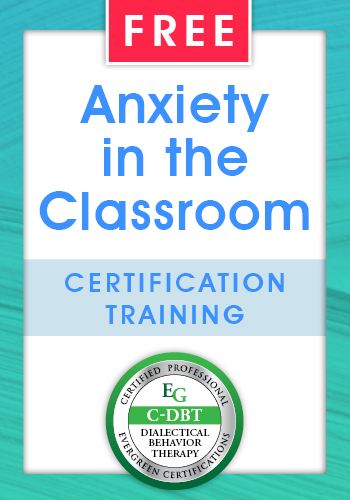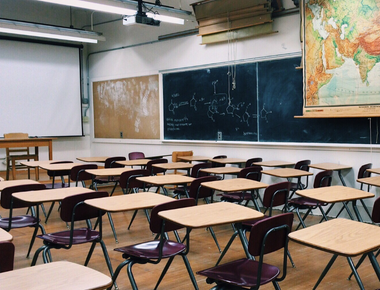Anxiety in Schools in a Post-Pandemic World
Strategies to effectively treat anxiety in a school setting

Some examples of the different types of anxiety that have emerged in a post-pandemic world for students are:
- Extreme pressure on themselves to do well on assignments and tests so that they can catch up from lost instructional time.
- Social anxiety and inability to effectively navigate peer conflict due to missing critical periods of in-person socialization.
- Somatization and attempts to leave school to avoid separation from caregivers or loved ones.
- Internalizing the elevated anxiety of adults who are also coping with post-pandemic struggles.
- Heightened awareness of ailments or illness.
Mindfulness is another technique that’s effective and easy to implement in schools especially because students and adults both benefit when it’s being practiced. Three different components of mindfulness to practice are grounding, deep breathing, and gratitude. Grounding brings the mind back to the present moment, deep breathing calms the body, and gratitude helps with reframing negative thinking.
While CBT and mindfulness are both highly effective treatment methods to use in schools, the challenge with amplified post-pandemic anxiety among students is that there aren’t enough mental health professionals to provide the support that’s needed. Schools are forced to get creative in figuring out ways to support larger cohorts of students. Some schools have been given extra funding to hire more mental health providers while others are utilizing “peace corners” in classrooms for students to use when their stress becomes unbearable. While it’s refreshing to witness such a large shift in prioritizing mental health support in schools, it still isn’t enough.
The truth is teachers face the brunt of post-pandemic stressors with students regularly in the classroom and while they are often the first to notice the behaviors of students who are struggling with anxiety, they don’t always feel prepared with how to support these students. If we want to continue to prioritize mental wellness in schools and service as many students as possible, it’s critical that we also equip teachers with tools and strategies to handle the different types of anxiety they observe in their classrooms.
This is why PESI is excited to offer a free seminar that was created specifically with teachers in mind. Anxiety in the Classroom is a one-day certification training designed to help teachers identify the earliest warning signs of anxiety and learn effective time-saving strategies to address some of the most common types of anxiety in a post-pandemic classroom. For even more resources and strategies for treating child mental health needs in a post-pandemic world, click here to check out PESI’s Youth Mental Health Specialist Certification Training.

Get the classroom skills and strategies to help students who struggle with anxiety and design a learning-conducive environment for all.
Join anxiety expert Dr. Steve O'Brien and learn easy teacher-tested interventions for supporting student achievement and creating a calm classroom.
Ashley Rose, LCSW, LSSW, has over ten years of experience providing mental health services to children in a school-based setting, having spent the latter half as a school social worker with Metro Nashville Public Schools working with students of all ages. Prior to that role, she served as a school-based therapist with Vanderbilt University’s community mental health program and as an in-home therapist with Camelot Care Centers. Ashley earned her Master’s degree in social work from Middle Tennessee State University while simultaneously developing professional trainings for Tennessee Department of Children’s Services through an assistantship program with The Tennessee Center for Child Welfare. Ashley also has 3 years of experience as an adoption specialist for high needs foster children through the Department of Social Services in South Carolina. Ashley currently resides in Nashville, and is a school social worker with Metro Nashville Public Schools serving full time at an elementary school.
Learn more about her educational products, including upcoming live seminars, by clicking here.



